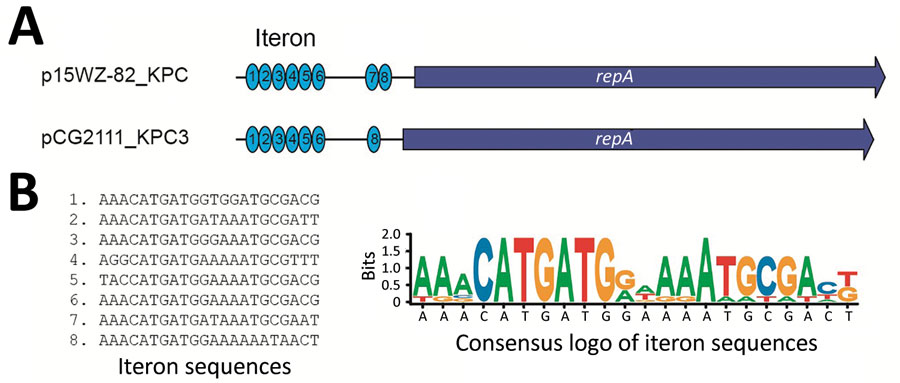Volume 28, Number 7—July 2022
Research
Outbreak of IncX8 Plasmid–Mediated KPC-3–Producing Enterobacterales Infection, China
Figure 4

Figure 4. The iteron difference between pCG2111-KPC-3 and p15WZ-82_KPC. A) p15WZ-82_KPC IncX8 plasmids have eight 22-bp iteron copies located upstream from the replication gene, whereas pCG2111-KPC-3 only has 7 copies of iteron and the seventh iteron (in comparison to p15WZ-82_KPC) was deleted. B) The sequences of the 8 iterons are listed and a SeqLog (https://pypi.org/project/seqlog) presentation of the conserved motif is shown. KPC, K. pneumoniae carbapenemase.
1These first authors contributed equally to this article.
Page created: May 05, 2022
Page updated: June 18, 2022
Page reviewed: June 18, 2022
The conclusions, findings, and opinions expressed by authors contributing to this journal do not necessarily reflect the official position of the U.S. Department of Health and Human Services, the Public Health Service, the Centers for Disease Control and Prevention, or the authors' affiliated institutions. Use of trade names is for identification only and does not imply endorsement by any of the groups named above.